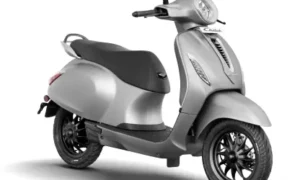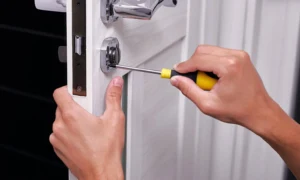Variable Frequency Drives (VFDs) can be controlled using manual inputs to adjust their operating parameters. Manual control allows operators or users to interact directly with the VFD and make real-time adjustments to meet specific requirements.
Here are a few common manual control inputs for VFDs:
1. Keypad/Control Panel:
VFDs frequently include a built-in keypad or control panel. Users can enter commands and change a number of settings, including motor speed, frequency, acceleration, deceleration rates, and operating modes, using the keypad. The keypad interface allows operators to select options, enter values, and start control processes.
A Variable Frequency Drive (VFD)’s keypad or control panel functions as a user interface for manual control and adjusting operating parameters. Operators can interact directly with the VFD and make adjustments in real-time to improve motor performance thanks to this user-friendly interface. Typically, a keypad or control panel will have buttons, a display screen, and occasionally a numerical keypad.
Users can navigate through the various menus and options presented on the screen by pressing the navigation buttons on the keypad. Operators can access the various settings and parameters that are available for adjusting by scrolling up and down or using specific function buttons. The display screen gives operators real-time feedback by displaying motor speed, frequency, and other pertinent data, enabling them to keep an eye on how the VFD is performing.
The control panel or keypad can be used by operators to change parameters like motor speed, frequency, acceleration, and deceleration rates. They can choose which parameter they want to modify, change its value using the numerical keypad or specific increase/decrease buttons, and then save their changes. Operators can fine-tune the VFD’s settings to satisfy particular application requirements thanks to its flexibility.
Check: Rockwell Automation 22F-A1P6N103 PowerFlex 4M AC Drive
2. Potentiometers:
Potentiometers or analog dials are examples of the analog input options available on some VFDs. By turning the dial or potentiometer, these devices enable manual adjustment of parameters like motor speed or frequency. Without the use of digital interfaces, this type of control offers a straightforward and understandable method for making adjustments in real-time.
Typically used for manual control of variable frequency drives (VFDs), potentiometers are analog input devices. They offer a quick and easy way to instantly change settings like frequency or motor speed. The input terminal, output terminal, and wiper terminal are the three terminals on a potentiometer, which is a variable resistor.
The wiper terminal of a potentiometer is connected to a VFD’s analog input, and the input and output terminals are connected to a power source. A changing voltage is produced at the wiper terminal as a result of the wiper moving along the resistive track as the potentiometer shaft is turned. The VFD then interprets this voltage signal to change the desired parameter.
3. External Switches or Buttons:
To enable manual control, VFDs can be integrated with external switches or buttons. These switches or buttons can be set up to start certain processes or change predetermined parameters. For instance, a switch might be used to change speed settings, change operating modes, or start or stop the motor.
Another method of manual control for variable frequency drives (VFDs) is the use of external switches or buttons. With the aid of these gadgets, operators can communicate with the VFD and start particular control processes or modify predetermined parameters.
4. HMI (Human Machine Interface):
A Human Machine Interface, which offers a graphical user interface for manual control, can be connected to VFDs. The HMI typically consists of a touchscreen display or a panel with buttons that gives users a simple way to interact with the VFD. The HMI can show real-time motor data, allow parameter changes, and give users access to different control options.
Allen Bradley PowerFlex 4M AC drives
A vital part of contemporary industrial systems, the Human Machine Interface (HMI) enables operators to communicate with and manage a variety of equipment, including Variable Frequency Drives (VFDs). The HMI acts as a human-machine interface and offers a visual and interactive platform for managing, configuring, and overseeing the operation of the VFD.
A display screen, input devices (such as touch screens, buttons, and keyboards), and software that enables interaction between the operator and the VFD typically make up an HMI.
5. Remote Control Stations:
In some situations, control stations can be used to operate VFDs from a distance. These control stations may have dials, switches, or buttons that can be used to start/stop operations, change preset configurations, or adjust motor speed. Operators can control VFDs remotely from a centralized location or from a location close to the driven machinery.
Variable Frequency Drives (VFDs) can be remotely controlled and viewed using Remote Control Stations (RCS), which are control interfaces. RCSs make it possible for operators to operate VFDs without having to be physically present close to the machinery.
It’s important to remember that depending on the manufacturer and model, the specific manual control inputs available for VFDs may change. The available control options and how they work are covered in detail in the user manual or other documentation that came with the VFD.
The flexibility of manual control inputs for VFDs allows operators to adapt in real time to shifting demands. Manual control inputs offer a way to work directly with the VFD to modify motor speed, frequency, and other settings to suit particular operational requirements.
Asteam Techno Solutions Pvt. Ltd. is based out of Surat Gujarat, India. With over 10 years’ experience in selling industrial automation components we are your one stop shop for all major brands such as Allen Bradley, Siemens, Omron, VIPA, MOXA, Phoenix Contact etc…. Same day shipping on orders placed by any time. We have a rigorous quality control process that insures only the best quality components. All products guaranteed to be in working order, in good condition and come with our standard 12-month warranty.








































